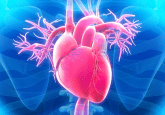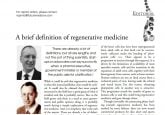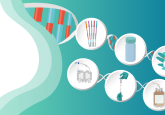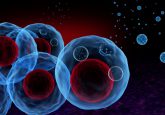The applications of exosomes: ask the experts
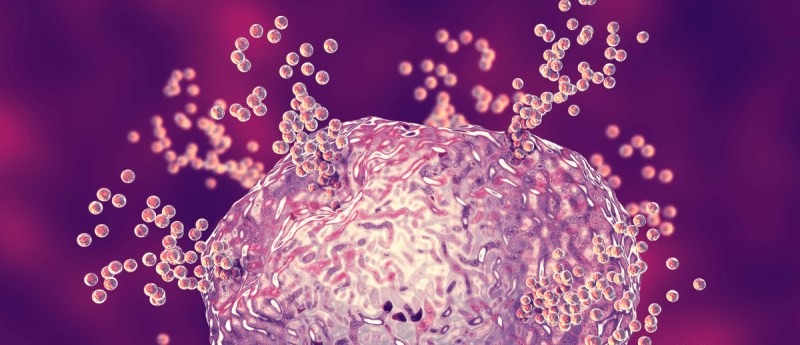
In this ‘Ask the experts’ feature, we have brought together a panel of experts from across the industry to share their current perspectives on exosomes. For example, what are the main benefits of using exosomes and how do they compare to other therapeutics? What should be considered when selecting media for the isolation of exosomes and do these considerations differ depending on the cell source? And how can exosomes be isolated on a large scale while maintaining their quality? Discover more on the topic with our panel of thought leaders, featuring Lisa Hamelmann (PromoCell; Heidelberg, Germany), Faezeh Shekari (Royan Institute; Tehran, Iran) and Steven M. Jay (University of Maryland; MD, USA).
-
-
- Meet the Experts
- At what level are you working with exosomes?
- What are the main benefits of using exosomes and how do they compare to other therapeutics?
- What are the limitations of manufacturing and using exosomes?
- What should be considered when selecting media for the isolation of exosomes and do these considerations differ depending on the cell source? (for example tumor-derived exosomes versus MSC-derived exosomes)
- How can exosomes be isolated on a large scale while maintaining their quality?
- How do you see the application of exosomes evolving in the next ten years?
-
Meet the Experts
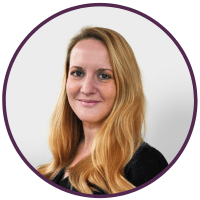
Lisa Hamelmann
Product Manager
PromoCell
Lisa Hamelmann is a Product Manager at PromoCell (Heidelberg, Germany), a provider of primary, stem, blood and immune cells, as well as optimized cell culture media systems. Before she joined PromoCell in 2018, Dr Hamelmann worked on her PhD at the University Medicine of the Johannes Gutenberg-University (Mainz, Germany) where she investigated new therapeutic options for the treatment of autoimmune diseases. At PromoCell, Lisa started as a Scientific Support Specialist, working closely with clients from pharmaceutical and biotechnology industries. In 2020 she became Product Manager for cells and media, responsible for the stem cell portfolio and the introduction of custom-tailored solutions, such as the cancer cell media systems. As Product Manager she works closely with scientists to help them maximize their work with exosomes for different applications, including exosomes as cancer biomarkers or in the development of novel exosome-based therapeutics.
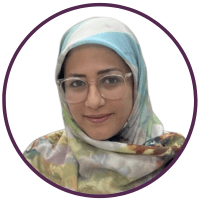
Faezeh Shekari
Assistant Professor
Royan Institute
Faezeh Shekari is an Assistant Professor in the Department of Stem Cells and Developmental Biology at Royan Institute (Tehran, Iran) where she oversees an extracellular vesicle (EV) research group. Faezeh is also supervisor of the EV production team in the Advanced Therapeutic Medicinal Product Center of Royan Institute, Chair of the International Society for Extracellular Vesicles (ISEV) Rigor and Standardization task force, and CEO of Celer Diagnostics (Toronto, Canada).

Steven M. Jay
Associate Professor
Fischell Department of Bioengineering at the University of Maryland
Stephen M Jay is an Associate Professor in the Fischell Department of Bioengineering at the University of Maryland (UMD; MD, USA). Steven joined UMD in 2013 following PhD training in biomedical engineering at Yale University (CT, USA) under Mark Saltzman and postdoctoral training in cardiovascular biology and molecular engineering jointly with Richard Lee at Brigham and Women’s Hospital (MA, USA) and Linda Griffith at MIT (MA, USA). His current research at UMD is focused on developing rationally designed therapeutic biotechnology based on EVs, aka exosomes. Particular issues of interest include drug loading into EVs and introducing quality control and standardization into EV biomanufacturing.
At what level are you working with exosomes?
Lisa Hamelmann (LH): Exosomes are naturally occurring cell products that are secreted by almost every cell type in the body. Due to their great potential for drug-delivery systems or disease diagnosis, there is an increasing interest in research and large-scale production of exosomes. As a cell-derived product, exosome production is dependent on cell growth. In addition to the efficient expansion of the cells, it is also important to ensure that certain behaviors and properties of the cells producing the exosomes are not changed during the upstream processes. In this regard, the environment of the cells, the cell culture medium, is an essential factor for investigating and producing exosomes. PromoCell is a trusted premier manufacturer of primary cells, including stem cells, and cell culture media systems. We design cell culture media that are specially tailored to the needs of the primary cells to ensure optimal isolation and expansion efficiency. As a certified supplier we provide various cell culture media compliant to GMP regulatory requirements and ensure the access to documentation required for exosome production in a clinical application.
Faezeh Shekari (FS): At Royan Institute, I supervise research projects about the basic science of EVs, including exosomes. Most of my research projects are focused on animal studies and in vitro evaluation of EVs therapeutic potencies. As supervisor of the EV production team in the Advanced Therapeutic Medicinal Product Center of Royan Institute, I supervise a production team to produce GMP-grade EVs for clinical trials. Moreover, I am the CEO of an EV-based diagnostics company in my home country (Firoozeh DiaTech) and a new branch in Canada (Celer Diagnostics). In this company, we developed a method to detect pathological markers in liquid biopsies with high specificity.
Steven M. Jay (SJ): I run an academic laboratory that focuses on understanding the basic biology of exosome interactions with target cells (human and prokaryotic), developing exosomes as therapeutics, and biomanufacturing of exosomes.
What are the main benefits of using exosomes and how do they compare to other therapeutics?
LH: Exosomes offer targeted, non-invasive, and efficient therapeutic approaches to a wide range of diseases and conditions. They can be engineered to carry specific payloads, such as drugs, antigens, or immune-modulatory molecules, directly to the target cells or tissue. Compared to other therapeutics, exosomes are naturally secreted by cells, so they are biosafe and have good target specificity, which leads to reduced side effects of the treatment. They also have the advantage of a surface structure that is similar to that of the cell membrane.
Additionally, exosomes can be used for non-invasive diagnostic purposes, as they can be isolated from various liquids, such as blood or urine. As they play a crucial role in tumor biology, they also offer the possibility to study cellular communication and signaling in cancer. This makes them good potential biomarkers for patient-specific tumor diagnostics or for the development of anti-cancer treatments.
FS: I use EVs for both therapeutic and diagnostic applications. I think the superiority of EVs’ therapeutic potential is laid in:
1. their lifeless nature; they cannot proliferate and they are safer than cells
2. their size; they can pass many barriers, including the blood-brain barrier
3. they can be lyophilized; therefore, they can be used as an off-the-shelf product
In the diagnostic field, I think EVs provided a breakthrough in liquid biopsy. For many many years, we searched for a needle in a haystack! And now we have a magnet to get the needle! I mean searching for a biomarker in a biological liquid such as blood is very difficult, considering the existence of highly abundant proteins that mask the detection of less abundant biomarkers. However, by EV isolation, we isolate the packages that are specifically sent by cancer cells from all the circulating noises in the blood or any other biological fluids like urine, milk or CSF.
SJ: All therapeutics have strengths and weaknesses. Exosomes are intriguing because they have some similarities to synthetic drug delivery systems but, because of their cellular origin, the power of molecular biology and genetic engineering can theoretically be applied to customize their properties. They may also have some intrinsic properties that are therapeutically beneficial, such as the ability to be preferentially taken up by specific cells or to penetrate biological barriers. Exosomes may also recapitulate the most critical benefits of some cellular therapies with a potentially superior safety profile. Exosomes also have limitations, namely that it is impossible to characterize all their components and their mechanism of action is still not clear.
What are the limitations of manufacturing and using exosomes?
LH: From our experience, one of the biggest challenges during the upstream process of exosome production is the availability and subsequent large-scale expansion of the exosome-producing cells. The first challenge is the standardized isolation of the cells from the required source, e.g., patient-derived cancer cells or MSCs. Due to the differing biological properties of exosomes secreted by different cell types, there is currently no standardized isolation. The later large-scale expansion of the cells under GMP conditions further requires standardized cell culture media from certified suppliers providing sufficient cell growth and production of pure EVs.
Looking at the regulatory side, another challenge for exosome-based therapeutics is that there is still a need for clear guidelines and standards for manufacturing, quality control and safety assessments.
FS: This is a young child! It needs time to grow. More research, rigor, and standardizations are required to pave the road through robustness as noted by the ISEV Rigor and Standardization subcommittee. I think it is too early to decide about limitations. We are still in the era of an explosion of information about EVs. We should focus on standardization and when we reach a steady state, we can talk about limitations.
SJ: There are currently no established critical quality attributes (CQAs) for exosome manufacturing. Developing reliable CQAs will be especially challenging due to the complexity of exosomes and the variability associated with any cell-based product. There is also a challenge of generating exosomes at a scale appropriate for widespread use in human at reasonable costs. Improvements in both upstream and downstream processes are still needed to enable exosomes as a practical class of therapeutics.
What should be considered when selecting media for the isolation of exosomes and do these considerations differ depending on the cell source? (for example tumor-derived exosomes versus MSC-derived exosomes)
LH: The cell culture medium is a critical factor when it comes to exosome yield, as it supports cell proliferation and expansion. Depending on the cell source the media should be optimized to support the growth and function of the specific cell type being cultured. The medium should also be optimized for high yield and purity of exosomes, while minimizing contamination with other EVs. For example, fetal bovine serum possesses several components that can interfere with endogenous EV activity and production. When choosing a medium for the expansion of the cells you either directly consider a serum- or better xeno-free medium, or, if the cells are increased to the critical levels in a serum-containing medium, they must be transferred to another medium before going into the downstream exosome production.
FS: That’s a very important issue. There are many parameters that affect cells in the culture medium including the producing cells, all the cell culture medium components, culturing conditions, and processing will impact the EVs’ biochemical composition and biological function. A task force in the Rigor and Standardization subcommittee of the ISEV is dedicated to discussing cell culture parameters that may affect EV characteristics, giving recommendations for transparent reporting, and identifying open questions. The goal of this task force is to increase awareness and promote reproducibility in EV research. The results will be published soon and will be easily accessible.
SJ: Eliminating alternative sources of exosomes in media is critical, as additives like serum can bring exosomes from their donor source along with them. Chemically-defined media is likely advantageous in the aggregate, but keeping costs down for large-scale production should also be considered.
How can exosomes be isolated on a large scale while maintaining their quality?
LH: The key word is standardization. In regard to the source of the exosomes, you should always keep in mind that healthy and high-quality cells produce high-quality therapeutic exosomes. Therefore, maintaining the quality of your cells, their functionality and the quality of their environment subsequently impacts the quality of your exosome production.
Optimal cost-efficiency, yield and standardization in large-scale exosome production may be achieved by utilizing two things; an established cell line releasing the desired exosomes and a highly defined serum-free medium. Both the cell line and the culture medium can synergize in their high intrinsic level of standardization to reproducibly yield a uniform and downstream-process-friendly exosome product of defined specification.
FS: We have a great guideline that has been written by approximately 400 experts, Minimal information for studies of EVs 2018, which is going to be updated in2023, should be considered and all criteria should be met. Briefly, besides the morphology, size distribution, and expression of protein markers, the function of EVs should be confirmed. Like the cell manufacturing process, EVs require quality control. The absence of viruses, bacteria, fungi and other unwanted bioactive components, such as, endotoxins, should be checked before any clinical study.
SJ: As long as harsh environments and methods are avoided, this should be possible. However, a key consideration is maintaining the appropriate microenvironment and phenotype of the producer cells, and this does not get enough attention. One aspect my group and some others are currently focusing on is the use of mechanical stimuli as reproducible and cheap methods to regulate producer cell behavior with respect to exosome production. But much more work needs to be done on this.
How do you see the application of exosomes evolving in the next ten years?
LH: The application of exosomes is rapidly evolving and continues to diversify, driven by advanced technologies in the production of exosomes and a better understanding of their biological functions. We already see more and more clinical trials and commercial development of exosome-based therapies as well as regulatory approvals. Given their unique biological behavior, EVs have enormous potential for use in immunotherapy and precision treatment. For example, in the field of cancer diagnosis and treatment, we already saw FDA approval for cancer diagnostic tests and promising approaches for cancer vaccine candidates. In the next ten years, the development of exosome-based diagnostic tests for early disease detection, personalized treatments and the monitoring of the response to those treatments will improve.
FS: I think the next decade will be golden because many basic issues have been resolved, and our knowledge has grown up. Many products will get approved and, specifically in the diagnostics field, I believe that we will have a revolution.
SJ: Like everything else, it depends. If the mechanism(s) of action become more well understood and biomanufacturing challenges can be solved, there is the potential for numerous exosome products to be implemented and approved within ten years. However, I think the more likely outcome is a longer trajectory, unless a “home run” type of application can be found, such as in the case of CAR T-cells for cell therapy.
Disclaimers
The opinions expressed in this interview are those of the interviewees and do not necessarily reflect the views of RegMedNet or Future Science Group.
This feature was produced in association with PromoCell.


